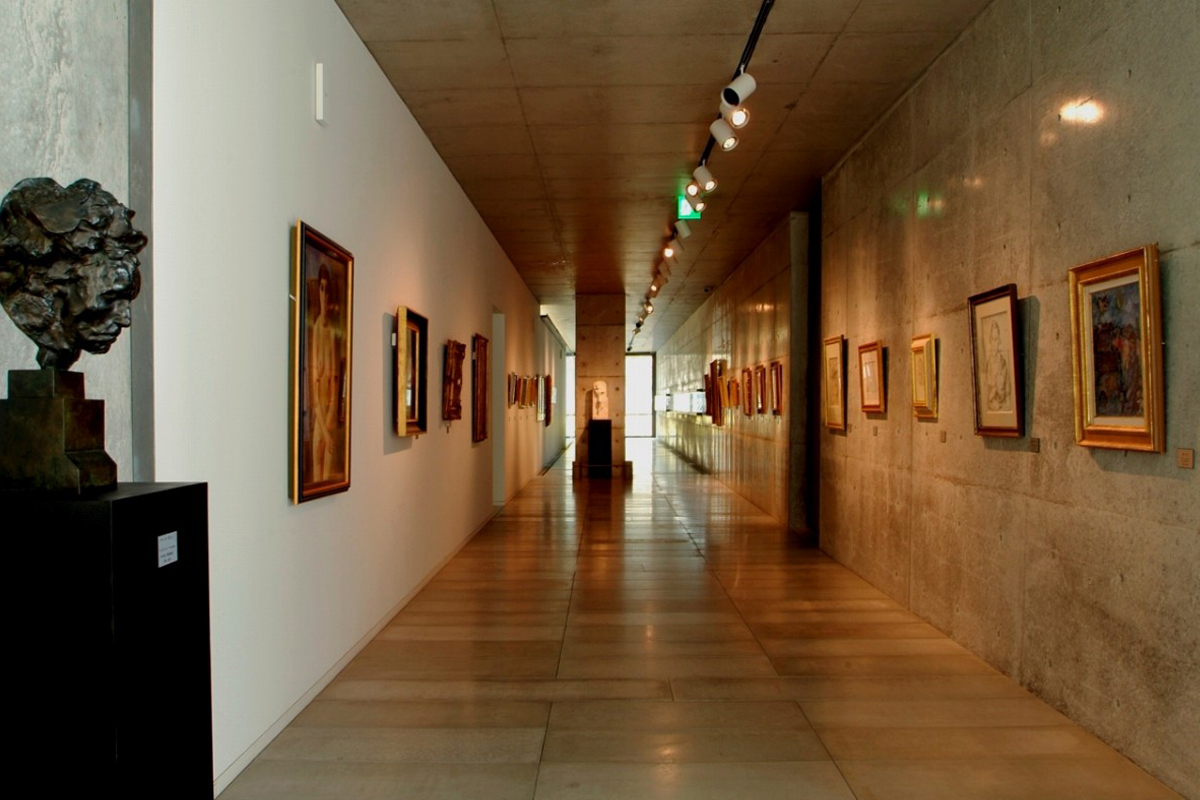Shikokumura Gallery / Waterscape Garden
- Period:
Opened 2002 (Designed by architect Tadao Ando)
An art museum offering encounters with works from around the globe
This gallery, designed by architect Tadao Ando, opened in 2002 to display works collected by Shikoku Mura founder Tatsuo Kato. Visitors can take their time to appreciate all the various works, including French paintings, Chinese gilt bronze Buddhas and bronze vessels, and Persian ceramics. The museum balcony offers a view of the Suikeien water garden that brings the landscape to life.
In addition to art, once or twice a year the museum also holds a special exhibition on folk tools from the Shikoku Mura collection. (The regular collection is not on display during the special exhibits)


Selections from the collection:
Note: Many pieces are rotated in and out of display 2-3 times a year.
Pictures from left to right.
Nude (1941)
Pierre Bonnard (1867-1947) 78×41cm
Painter Pierre Bonnard was a central figure in the French art movement Les Nabis. His work often featured bright, familiar scenes of middle class life in Paris, painted in vivid, extravagant color.
Standing Statue of Vajrasattva Bodhisattva
Plated bronze 27.1cm high / China / Xi Ping 516-518 CE
This gilt bronze is made by plating a cast copper alloy statue with gold. This Bodhisattva is from the Northern Wei dynasty of China and bears the inscription 煕平 (Xi Ping) (516-518).
Kaijubudo Patterned Bronze Mirror
Bronze 16.5 cm across / China / Late 7th Century
Bronze mirrors were used as ritual or festival objects in China. Kaijubudo (sea mammal and grape) is the name for this particular decorative pattern. It became famous for its similarities to a mirror with a similar pattern excavated from the Takamatsuzuka burial mound.
Long-necked Vessel with Lusterware Patterning
Ceramic 19.2 cm high / Iran / circa 13th Century
Lusterware glaze, which is believed to have originated in Mesopotamia, is richly varied in color and pattern. The technique for producing the beautiful iridescent colors is said to be extremely difficult. The “Lusterware” name was given because of the metallic, almost gold-like sheen seen in ceramics produced with this technique.
Naghini
Stone sculpture 164 cm high / Mathura, India / circa 1st Century
While the Gandhara Buddha seems to have Greek features, the Mathura Buddha statues have more Asian ones. This Naghini statue is one of three are three similar works. Another is at the Indian National Museum, while the third is at the Nelson-Atkins Museum of Art in Kansas City, Missouri.





























